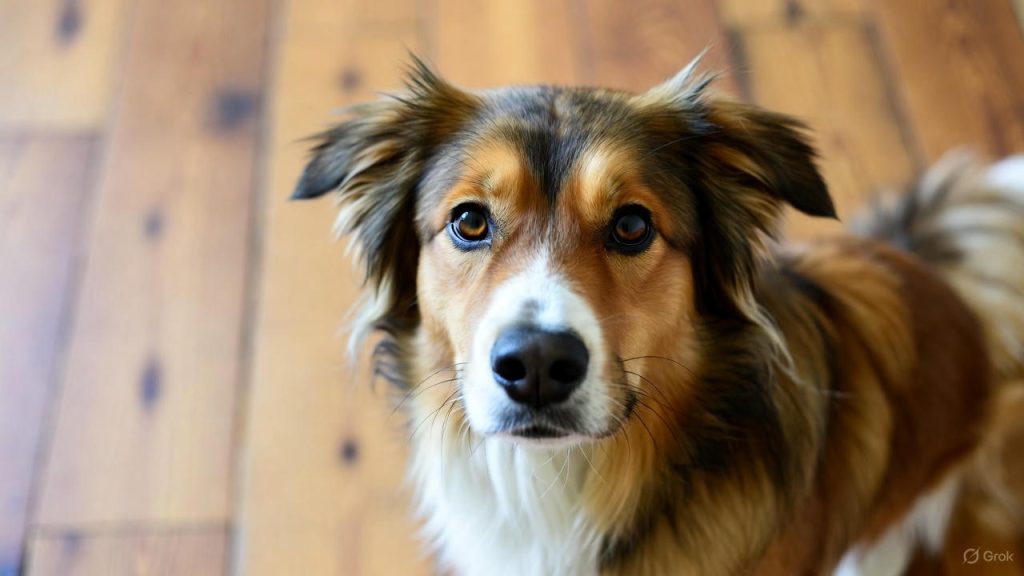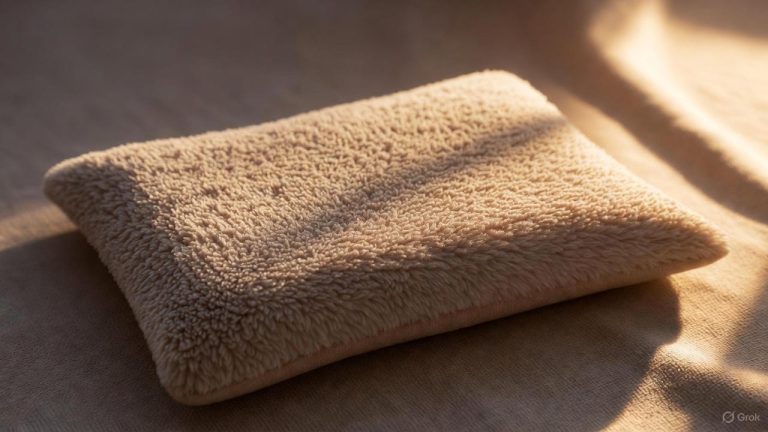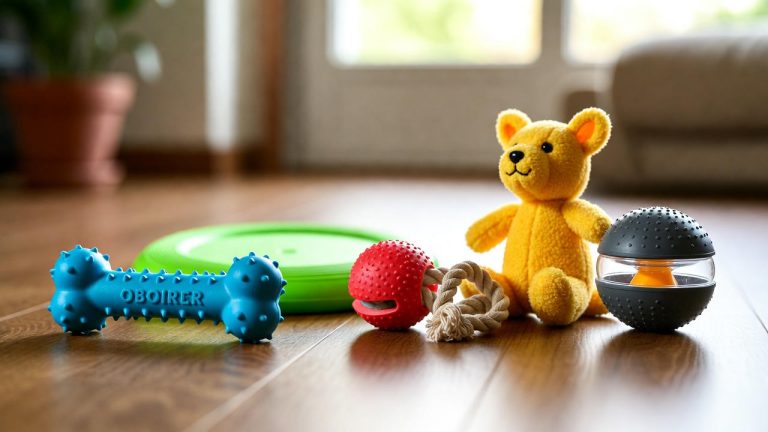How to Stop Dog from Chewing Wood?
You walk into your living room and find wood chips scattered across the floor. Your coffee table leg looks like a beaver attacked it. Your deck railing has suspicious teeth marks. Sound familiar? If your dog has a wood-chewing habit, you’re not alone. Thousands of dog owners deal with this frustrating and potentially dangerous behavior every day.
Wood chewing isn’t just about property damage. This behavior puts your furry friend at risk for splinters, intestinal blockages, and toxic exposure from treated lumber. The good news? You can break this habit with the right approach and consistent training.
Why Dogs Chew on Wood
Before you can fix the problem, you need to understand what drives your dog to gnaw on wooden furniture, deck boards, and tree branches.
Teething Puppies
Puppies between three and six months old experience intense discomfort as their adult teeth come in. They chew everything they can find to relieve the pressure and pain in their gums. Wood offers a satisfying texture that helps push through emerging teeth. Young dogs don’t know the difference between an appropriate chew toy and your antique chair leg.
Boredom and Lack of Stimulation
Dogs need mental and physical exercise every single day. A bored dog will create their own entertainment, and destructive chewing often tops the list. If your dog spends hours alone without toys, interaction, or activity, they’ll turn to whatever catches their attention. Wood furniture and fencing become convenient targets.
Separation Anxiety
Some dogs panic when left alone. This anxiety manifests through destructive behaviors like chewing, digging, and excessive barking. Dogs with separation issues often chew near doors and windows or attack furniture that smells strongly of their owners. The repetitive action of chewing helps them self-soothe during stressful moments.
Natural Instincts
Wild canines chew on sticks and branches as part of their natural behavior. Your domesticated dog still carries these instincts. They find wood appealing because it mimics what their ancestors used to clean their teeth and exercise their jaws. The texture feels good, and the activity satisfies deep-rooted urges.
Nutritional Deficiencies
Dogs sometimes chew inappropriate items when their diet lacks essential nutrients. A deficiency in minerals or fiber might drive your dog to seek these elements elsewhere. Wood contains cellulose and other compounds that dogs instinctively recognize, even though they can’t properly digest them.
Attention-Seeking Behavior
Smart dogs quickly learn which behaviors get immediate reactions from their owners. If you rush over and interact with your dog every time they chew wood, you’ve just reinforced the behavior. Even negative attention feels better than no attention to a lonely dog.
Health Risks of Wood Chewing
Wood chewing isn’t a harmless quirk. This habit creates serious health dangers you need to take seriously.
Splinters can lodge in your dog’s mouth, throat, or digestive tract. These sharp pieces cause infections, abscesses, and internal injuries. Large splinters might puncture organs or create blockages that require emergency surgery.
Treated lumber poses toxic risks. Pressure-treated wood contains chemicals like copper azole and alkaline copper quaternary. Older treated wood might contain arsenic compounds. When your dog chews this wood, they ingest these poisons. Painted or stained wood adds another layer of danger with lead, solvents, and other harmful substances.
Intestinal blockages happen when dogs swallow chunks of wood. These pieces don’t digest and can create life-threatening obstructions. Symptoms include vomiting, loss of appetite, lethargy, and inability to defecate. Surgery becomes necessary to remove the blockage.
Dental damage occurs from chewing hard wood surfaces. Dogs can crack or break their teeth, leading to painful infections and expensive dental procedures. Worn teeth make eating difficult and reduce your dog’s quality of life.
Immediate Steps to Stop Wood Chewing
Start with these practical actions you can take right now to protect your dog and your property.
Remove Access to Wood
Walk through your home and yard to identify all wooden items your dog targets. Block access to these areas using baby gates, furniture, or temporary barriers. Move potted plants with wooden stakes out of reach. Cover deck railings with bitter spray or physical barriers. The less opportunity your dog has to practice this behavior, the faster they’ll forget about it.
Supervise Your Dog
Watch your dog closely, especially during the times they usually chew wood. Catch them in the act before they start gnawing. This allows you to interrupt the behavior and redirect them to something appropriate. Set up a comfortable spot where you can keep an eye on your dog while you work or relax.
Use Bitter Deterrent Sprays
Bitter apple spray and similar products make wood taste terrible to dogs. Apply these non-toxic sprays generously to all wooden surfaces your dog likes to chew. Reapply regularly, especially after rain or cleaning. Most dogs hate the bitter taste and avoid treated areas. Test the spray on a small hidden area first to make sure it won’t damage the finish.
Interrupt and Redirect
The moment you see your dog approach a wooden item with intent to chew, use a firm “no” or “leave it” command. Immediately offer an appropriate chew toy as an alternative. Praise and reward your dog enthusiastically when they take the toy instead. This teaches them what they can chew while satisfying their urge.
Increase Exercise
A tired dog is a well-behaved dog. Boost your dog’s daily exercise routine significantly. Take longer walks, play fetch until they’re panting, or try activities like swimming or hiking. Mental stimulation counts too – puzzle toys, training sessions, and sniff walks exhaust dogs mentally. Aim for at least 30 to 60 minutes of vigorous activity daily, adjusted for your dog’s age and breed.

Provide Appropriate Chew Alternatives
Your dog needs to chew. The trick is directing this natural behavior toward safe, appropriate items.
Durable Chew Toys
Invest in high-quality chew toys designed for aggressive chewers. Brands like Kong, Nylabone, and Benebone create products specifically for dogs who love to gnaw. Look for toys made from tough rubber, nylon, or natural materials. Rotate different toys weekly to keep things interesting. Dogs get bored with the same toy every day.
Natural Wood Chews
Satisfy your dog’s wood-chewing instinct with safe alternatives. Coffee wood chews, olive wood sticks, and untreated hardwood chews offer a wood-like experience without the dangers. These natural chews come from sustainable sources and contain no toxic chemicals. They splinter less than regular lumber and provide dental benefits.
Edible Chews
Long-lasting edible chews keep dogs occupied for hours. Bully sticks, yak cheese chews, and natural rawhide alternatives give dogs something productive to gnaw. These treats slowly wear down, providing entertainment and nutrition. Monitor your dog with any edible chew to prevent choking on small pieces.
Frozen Treats
Freeze toys stuffed with peanut butter, yogurt, or wet dog food. The cold texture soothes sore gums while the challenge of extracting the food keeps dogs mentally engaged. This works especially well for teething puppies and hot summer days. Try freezing a Kong toy with layers of kibble and broth for hours of entertainment.
Rope Toys
Thick rope toys satisfy the urge to chew while cleaning teeth naturally. The fibers act like dental floss as dogs gnaw and pull. Choose ropes made from natural cotton without toxic dyes. Replace rope toys when they become frayed or if pieces start coming loose.
Training Techniques That Work
Consistent training forms the foundation of stopping wood-chewing behavior permanently.
Teach “Leave It” Command
This essential command prevents your dog from approaching forbidden items. Start by holding a treat in your closed fist. When your dog sniffs and tries to get it, say “leave it” firmly. Wait until they back away, then reward with a different treat. Practice with increasingly tempting items until your dog reliably responds. Use this command every time your dog approaches wood they shouldn’t chew.
Positive Reinforcement
Reward every good decision your dog makes. When they choose their chew toy over the furniture leg, celebrate like they won the lottery. Give treats, excited praise, and affection. Dogs repeat behaviors that earn rewards. Make the right choice more appealing than the wrong one through consistent positive feedback.
Crate Training
A properly introduced crate becomes your dog’s safe den. Use it when you can’t supervise to prevent wood chewing. Never use the crate as punishment. Make it comfortable with bedding and toys. Dogs won’t soil their den, and they can’t destroy your furniture when they’re safely contained. Gradually increase crate time as your dog becomes comfortable.
Clicker Training
Clicker training marks the exact moment your dog does something right. Click when your dog ignores wood and approaches their toy instead. Follow immediately with a treat. The click creates a clear association between the behavior and the reward. This precision helps dogs understand exactly what you want faster than words alone.
Consistency Across All Family Members
Everyone in your household must follow the same rules. If one person lets the dog chew sticks outside while another prohibits it, your dog gets confused. Hold a family meeting to establish clear boundaries. Create a list of acceptable and unacceptable chew items. Make sure everyone uses the same commands and rewards.
Address Underlying Issues
Sometimes wood chewing signals deeper problems that need your attention.
Veterinary Checkup
Schedule an appointment with your vet to rule out medical causes. Blood work can reveal nutritional deficiencies driving the behavior. Your vet might recommend dietary changes or supplements. They can also check for dental problems that make your dog seek relief through chewing. Some dogs chew excessively due to pain or illness.
Anxiety Management
If separation anxiety drives the chewing, you need a comprehensive treatment plan. Start with shorter departures and gradually extend your time away. Create a calm departure routine without emotional goodbyes. Consider calming supplements, pheromone diffusers, or anxiety wraps. Severe cases might require medication prescribed by your veterinarian or consultation with a veterinary behaviorist.
Diet Evaluation
Review your dog’s current diet with your vet or a canine nutritionist. Low-quality foods might lack essential nutrients despite meeting basic requirements. Consider switching to a higher-quality food with better bioavailability. Add fiber-rich vegetables like pumpkin or green beans if your vet approves. Proper nutrition eliminates one potential cause of inappropriate chewing.
Environmental Enrichment
Transform your home into a stimulating environment. Rotate toys regularly to maintain novelty. Hide treats around the house for your dog to find. Set up puzzle feeders that make them work for meals. Play background music or leave the TV on when you’re gone. Create a comfortable space near windows where your dog can watch outside activity.
Long-Term Prevention Strategies
Stopping wood chewing isn’t a one-time fix. You need ongoing management to prevent relapse.
Maintain Exercise Routines
Never skip your dog’s exercise, even on busy days. Regular physical activity prevents boredom and burns excess energy that might otherwise fuel destructive behaviors. Vary your routes and activities to keep things interesting. Dogs who get consistent exercise rarely develop problematic chewing habits.
Regular Play Sessions
Dedicate time each day to interactive play with your dog. Tug-of-war, fetch, and hide-and-seek strengthen your bond while providing stimulation. These sessions tire your dog physically and mentally. A dog who gets quality time with their owner feels less need to seek attention through bad behavior.
Ongoing Training
Dogs need mental challenges throughout their lives. Keep practicing commands, teach new tricks, and introduce advanced training. Consider dog sports like agility, nose work, or obedience competitions. Mental exhaustion prevents boredom and the destructive behaviors that follow.
Environmental Management
Continue using deterrent sprays and barriers as long as necessary. Some dogs need months of management before the habit breaks completely. Don’t remove safeguards too quickly. Gradual changes help ensure your dog won’t return to old patterns. Monitor high-risk times like when you first return home or during storms when anxiety peaks.
Annual Vet Visits
Keep up with regular veterinary care to catch any developing issues early. Dental cleanings prevent tooth problems that might drive chewing. Updated blood work tracks nutritional status. Your vet can adjust recommendations as your dog ages and their needs change.
Special Considerations for Different Life Stages
Different ages require different approaches to managing wood-chewing behavior.
Puppies
Teething puppies need extra patience and support. Keep a variety of appropriate chew toys always available. Freeze wet washcloths for them to gnaw. Puppy-proof your space thoroughly because young dogs explore everything with their mouths. Focus on teaching what they can chew rather than just correcting what they can’t. This foundation prevents adult chewing problems.
Adult Dogs
Adult dogs who suddenly start chewing wood need careful evaluation. This behavior change might signal stress, illness, or environmental changes. Review what’s different in their life. Has your schedule changed? Did you move? Is there a new pet or family member? Address the root cause rather than just treating the symptom.
Senior Dogs
Older dogs might chew due to cognitive decline, dental pain, or anxiety about their changing abilities. Provide softer chew options that don’t hurt aging teeth. Increase comfort measures and maintain routines that help them feel secure. Consult your vet about age-related issues that might contribute to the behavior.
When to Seek Professional Help
Some situations require expert intervention beyond basic home training.
Contact a certified dog trainer or veterinary behaviorist if your dog’s wood chewing continues despite consistent efforts. Professional trainers assess your specific situation and create customized behavior modification plans. They spot subtle issues you might miss and offer advanced techniques.
Seek help immediately if your dog shows signs of severe anxiety, aggression when interrupted from chewing, or if they’ve already suffered injuries from wood splinters. Professionals can prescribe medication if needed and guide you through systematic desensitization protocols.
Working with an expert costs money upfront but saves you from ongoing property damage, potential medical emergencies, and years of frustration. Think of it as an investment in your dog’s wellbeing and your peace of mind.
Success Stories and Realistic Expectations
Breaking a wood-chewing habit takes time. Most dogs show improvement within two to four weeks of consistent management and training. Complete resolution might take several months, especially for deeply ingrained behaviors.
Stay patient and persistent. Every dog progresses at their own pace. Celebrate small victories like choosing a toy over furniture or responding to the “leave it” command. These moments prove your efforts are working.
Don’t expect perfection. Dogs have off days just like humans. A single slip doesn’t mean failure. Simply return to your routine and continue reinforcing good behaviors. With time, the right approach, and genuine commitment, your dog can overcome their wood-chewing habit completely.
Your wooden furniture, deck, and peace of mind are worth the effort. Your dog deserves to live safely without the risks wood chewing creates. Start today with one small change, then build from there. You’ve got this, and your dog will thank you for helping them break this dangerous habit.




